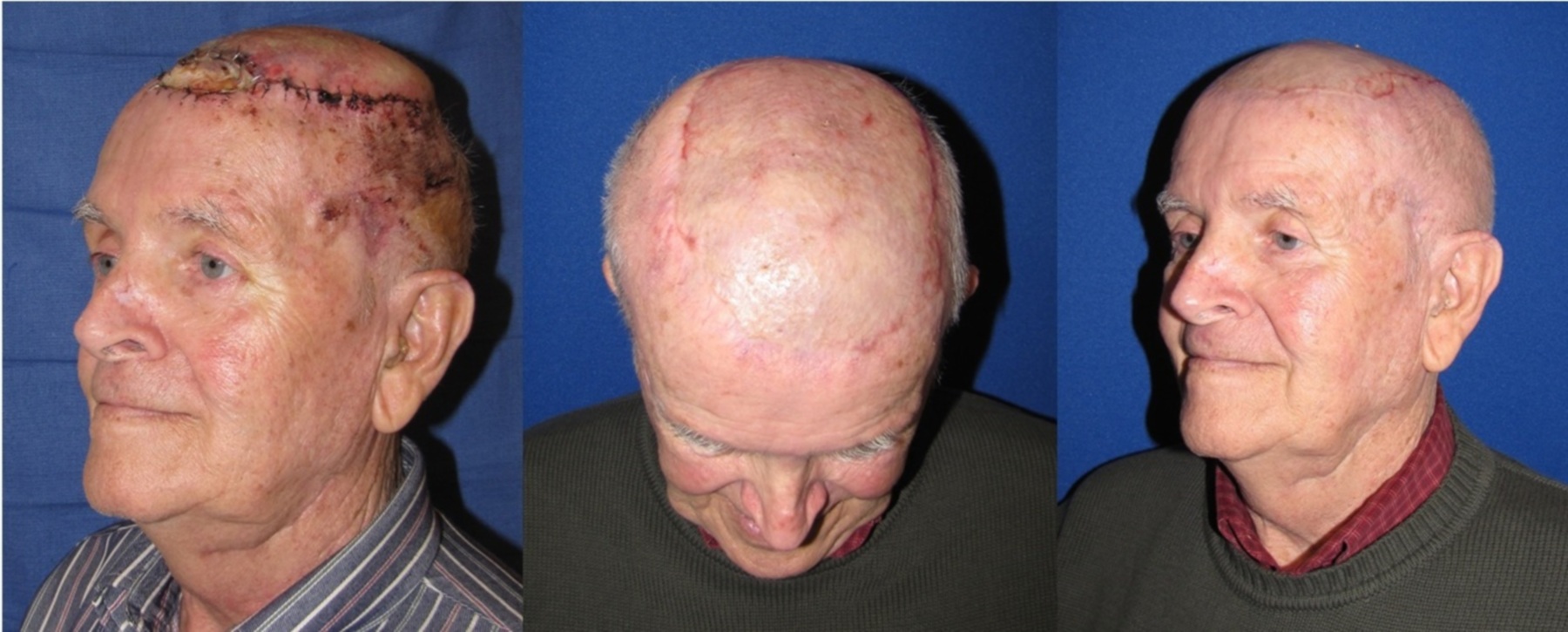|
|
|
|
|
Back to 2014 Annual Meeting Posters
Scalp Reconstruction and Tailoring Free Tissue Transfer in the Elderly: A Case Series
Michael Sosin, MD1, Arif Chaudhry, M.D.2, Carla De La Cruz, B.S.1, Branko Bojovic, M.D.1, Paul N. Manson, M.D.3, Eduardo D. Rodriguez, M.D., D.D.S.2.
1R Adams Cowley Shock Trauma Center, Baltimore, MD, USA, 2New York University Langone Medical Center, New York, NY, USA, 3The Johns Hopkins Hospital, Baltimore, MD, USA.
BACKGROUND: Scalp and calvarial defects often require free tissue transfer. Microvascular tissue transfer for scalp reconstruction in the elderly is traditionally associated with high rates of morbidity and mortality that can make the microsurgeon reluctant to attempt free tissue transfer. The purpose of this series is to report the outcomes and safety profile of scalp reconstruction in elderly patients.
METHODS: Retrospective analysis of a single institution’s experience of scalp reconstruction (E.D.R.) using free tissue transfer in patients over the age of 70 from 2005-2011 was reviewed.
RESULTS: A total of 8 patients met inclusion criteria, 5 male and 3 female, with a mean age of 80.1-years old (range: 73-90). Malignancy was the etiology of defects in 7/8 patients, nonhealing wounds in 5/8 patients, and exposed bone or prosthesis in 4/8 patients. Radiation exposure occurred in 2/8 patients prior to free tissue transfer. 6/8 patients required cranioplasty. Mean size calvarial defect was 92cm2 (range:35-285cm2). Free flaps included: 3 ulnar, 3 ALT, and 1 latissimus dorsi, and 1 thoracodorsal perforator flap achieving 100% soft tissue coverage. Mean follow-up time was 18.3 months (range:2-46). Donor site morbidity was minimal. Mean flap size was 117.6cm2 (range:42-285cm2). Mortality rate was 0%. Immediate flap failure was 0%. Complications occurred in 4/8 patients including venous congestion, flap atrophy, and dehiscence. Mean revisional procedures per patient were 1.25.
CONCLUSION: The use of free tissue transfer in complex and large scalp and calvarial defects should be considered the standard of care in the elderly population. Chronological age does not increase mortality or catastrophic flap complications. However, morbidity is increased in the elderly and revisional surgery is likely. Septua, octo, and nonagenarians require an individualized approach for free tissue scalp reconstruction to minimize donor site morbidity and effectively achieve soft tissue coverage.
 
Back to 2014 Annual Meeting Posters
|
|




